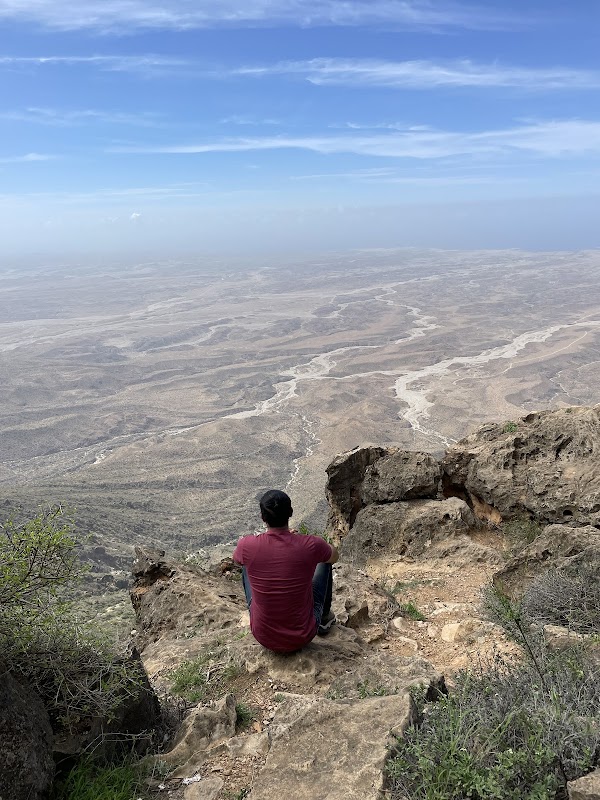
Experience Salalah’s Khareef Festival, where monsoon rains awaken a lush southern Oman. From cloud-laden mountains to vibrant markets, discover a season that blends nature’s vigor with rich culture and adventure.
Pack for Rain and Mud
Expect wet trails and slippery surfaces, so bring waterproof boots and quick-dry clothing to stay comfortable and safe during hikes and explorations.
Stay Hydrated Despite the Cool Weather
Monsoon temperatures are mild but high humidity means you’ll still sweat; carry sufficient water and electrolyte replacements especially during hikes.
Use Local Transport for Wider Access
While central Salalah is walkable, visiting remote festival sites or natural landmarks calls for efficient local taxis or renting a vehicle.
Visit Early or Late in the Day
Beat crowds and catch cooler temperatures by planning outdoor activities during morning or late afternoon hours—peak midday can be misty but also busier at festival sites.
Exploring the Khareef: Your Guide to the Salalah Tourism Festival
The Salalah Tourism Festival—known locally as the Khareef Festival—transforms Oman’s southern coast into a lush, mist-wrapped playground every year. This annual celebration, held during the monsoon months, invites adventurers and culture seekers alike to witness a landscape fiercely alive, where the arid desert wilts beneath the steady rainfall, and verdant hills take center stage.
Set against the backdrop of the Dhofar Mountains, the festival is more than an event; it’s an invitation to engage with a season that redefines the region’s identity. From July through September, Salalah’s temperature cools to a moderate 25-30°C (77-86°F), a sharp contrast to the searing heat elsewhere in Oman, making it the perfect time for outdoor explorations that mix cultural immersion with natural wonder.
The festival’s core lies within the city of Salalah but spills across its surroundings — extensive parks, gardens, and heritage sites become stages for art, traditional music, dance, and food markets. Mechanized by centuries-old frankincense trade routes, the air carries the lingering scent of this gum-resin treasure, grounding visitors in the deep history of the region while the landscape outwardly pulses with rainfall-fed vigor.
Activities range from relaxed walks along shaded wadis to mountain hikes where clouds hang low, daring you to press upwards through teak forests and grasslands damp with mist. For those aiming for height, Jebel Samhan offers trails that climb roughly 1,400 meters, rewarding hikers with panoramic views of the Arabian Sea and the sprawling monsoon-shrouded terrain.
Pragmatic planning matters here. Expect sporadic rainfall, so bring dependable waterproof gear. Footwear should handle wet, often slippery ground, while hydration remains critical despite the cooler air. Many vendors and facilities stay open during the festival, but some remote routes demand self-sufficiency.
Beyond adventures, the festival nurtures local connection. Frankincense harvesters demonstrate their age-old craft. Traditional Omani cuisine tempts at crowded night markets. Music and storytelling weave narratives alongside nature’s own rhythms.
Whether navigating the sensory-rich souks or standing beneath dripping canopies swept clean by monsoon wind, the Salalah Tourism Festival shifts you into the pulse of a land responding to the season’s call. It’s an invitation not just to observe nature’s transformation but to live within it, respect its force, and leave with stories charged by a land that is fiercely itself.
Nearby Trips
All Adventures
Boat Charters
Water Activities
Adventures near Salalah, Oman
Discover the unique and memorable adventures that make Salalah, Oman special.
Frequently Asked Questions
When exactly does the Salalah Tourism Festival take place?
The festival runs annually from July through September, coinciding with the monsoon season that transforms Salalah’s landscape.
Are the hiking trails suitable for beginners?
Many trails around Salalah are accessible for hikers with moderate fitness, but some routes, like Jebel Samhan, require more stamina and surefootedness due to elevation and wet terrain.
What local foods should visitors try during the festival?
Don’t miss traditional Omani dishes such as Shuwa (slow-cooked lamb), halwa desserts, and frankincense-infused beverages offered at markets and festival events.
Is it safe to hike during the monsoon rains?
Hiking is safe if proper precautions are observed—wear waterproof boots, avoid trails after heavy downpours, and always check local weather forecasts.
Where can I experience traditional frankincense harvesting?
Several festival sites feature frankincense demonstrations, often near the hills where Boswellia trees grow; local guides explain harvesting and its cultural significance.
Are there any environmental rules visitors should know?
Visitors are encouraged to minimize waste, stick to marked paths to prevent erosion, and respect protected wildlife areas to preserve Salalah’s unique monsoon ecosystem.
Recommended Gear
Waterproof Hiking Boots
Essential for navigating wet, slippery trails throughout the monsoon festival season.
Light Rain Jacket
Protects against sudden showers without overheating in humid conditions.
Reusable Water Bottle with Filter
Critical to stay hydrated, especially during mountain hikes and outdoor festivities.
Compact Daypack
Carries essentials comfortably including rain gear, water, and camera during explorations.
Local Insights
Hidden Gems
- "Sumhuram Old City ruins—a lesser-visited archaeological site reflecting ancient trade networks."
- "Wadi Darbat waterfalls, where monsoon-fed water cascades into quiet pools perfect for a break."
Wildlife
- "Socotra cormorants along the coast"
- "Rare Arabian oryx and mountain gazelles inhabiting nearby reserves"
History
"Salalah’s Khareef Festival marks a heritage intertwined with frankincense trade routes dating back thousands of years, linking Oman to ancient civilizations across the Mediterranean and Asia."
